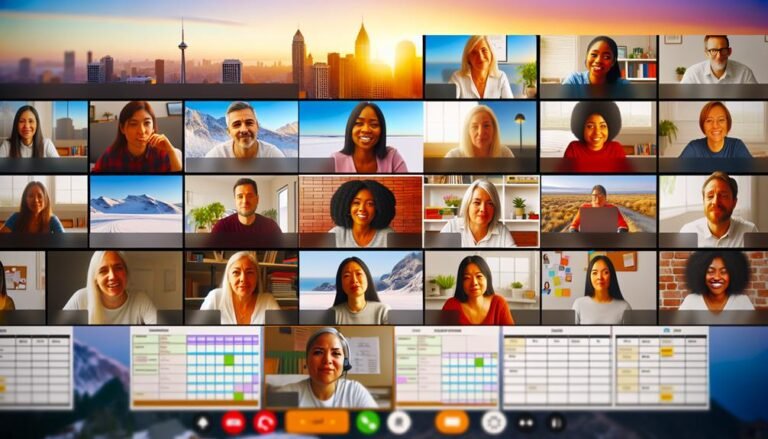Understanding Neurodiversity: An Overview
Understanding Neurodiversity: An Overview
Imagine stepping into a colorful tapestry, woven with intricate threads of diverse minds and unique perspectives. Neurodiversity, much like this vibrant tapestry, represents the beautiful mosaic of human cognition.
As you embark on this exploration of understanding neurodiversity, you will unravel the origins, principles, and characteristics that shape this concept.
But beyond mere understanding lies a deeper quest—to embrace the power of inclusivity and acceptance.
So, are you ready to embark on a journey where you’ll discover the fascinating world of neurodiversity and its impact on education and society?
Origins of Neurodiversity
The origins of neurodiversity can be traced back to the late 1990s when the concept was first introduced by sociologist Judy Singer.
Neurodiversity is a term that recognizes and celebrates the diversity of neurological differences, such as autism, ADHD, and dyslexia, as natural variations of the human brain.
It challenges the notion that these differences are disorders or deficits that need to be fixed or cured.
Instead, neurodiversity emphasizes the value of these differences and promotes acceptance, inclusion, and accommodation for individuals with neurological variations.
It aims to create a society that appreciates and supports the unique strengths and perspectives of neurodivergent individuals, fostering a more inclusive and equitable world for everyone.
This concept has gained momentum over the years and has led to a shift in the way society perceives and understands neurodivergent individuals.
Key Principles of Neurodiversity
To understand the principles of neurodiversity, it’s important to recognize and embrace the unique strengths and perspectives of individuals with neurological differences. One key principle is the belief that neurodivergent individuals should be accepted and valued for who they are, rather than being judged by neurotypical standards.
This includes understanding that neurological differences are natural variations of the human brain, rather than disorders or deficits that need to be fixed. Another principle is the recognition that neurodiversity is a form of diversity that contributes to the richness and complexity of human society.
It emphasizes the importance of creating inclusive environments that celebrate and accommodate the needs of all individuals, regardless of their neurotype. By embracing these principles, we can foster a more inclusive and understanding society for everyone.
Neurodiverse Traits and Characteristics
Understanding neurodiverse traits and characteristics is essential for recognizing and appreciating the diverse ways in which individuals with neurological differences experience the world. Neurodiversity encompasses a range of conditions such as autism, ADHD, dyslexia, and Tourette’s syndrome, among others. These conditions aren’t disorders or deficits, but rather represent natural variations in brain wiring and functioning.
Neurodiverse individuals often possess unique strengths and abilities, including exceptional memory, heightened sensory perception, and intense focus. They may also exhibit challenges in areas such as social interactions, communication, and executive functioning.
It’s important to understand that neurodiverse traits aren’t inherently good or bad, but rather different from the neurotypical population. By embracing and celebrating neurodiversity, society can create a more inclusive and accepting environment for all individuals, regardless of their neurological differences.
Understanding Neurodiversity in Education
Incorporating neurodiversity into education enhances inclusivity and supports the unique learning needs of all students.
By recognizing and valuing the diverse ways in which students think, learn, and process information, educators can create an inclusive learning environment that meets the needs of neurodiverse students.
This involves implementing teaching strategies and accommodations that cater to different learning styles, providing individualized support, and fostering a culture of acceptance and understanding.
Neurodiversity in education promotes the idea that neurological differences aren’t deficits but rather natural variations of the human brain.
It encourages educators to embrace these differences and celebrate the strengths and talents of all students, regardless of their neurodivergent profiles.
This approach enables students to thrive academically, socially, and emotionally, paving the way for a more inclusive and equitable education system.
Promoting Inclusivity and Acceptance
By embracing the concept of neurodiversity, educators can foster an inclusive and accepting environment that celebrates the unique strengths and talents of all students. This means creating a classroom where every student feels valued and supported, regardless of their neurological differences.
One way to promote inclusivity is by implementing universal design principles in teaching strategies and learning materials. This ensures that all students can access and engage with the curriculum in a way that suits their individual needs.
Additionally, educators can foster acceptance by providing opportunities for students to learn about and interact with different neurodiverse individuals. This can be done through guest speakers, community partnerships, and inclusive classroom discussions.
Frequently Asked Questions
How Does Neurodiversity Impact Individuals in the Workplace?
Neurodiversity impacts individuals in the workplace by bringing unique perspectives, skills, and talents. It fosters creativity, problem-solving, and innovation.
Are There Any Specific Challenges Faced by Neurodiverse Individuals in Social Settings?
In social settings, neurodiverse individuals may face specific challenges. These can include difficulties with communication, social cues, and sensory overload.
However, with understanding and support, they can thrive and contribute to diverse and inclusive communities.
Is There a Genetic Basis for Neurodiversity?
Yes, there’s a genetic basis for neurodiversity. Different genes and variations can contribute to conditions like autism and ADHD.
Understanding these genetic factors helps us better comprehend and support neurodiverse individuals.
What Are Some Common Misconceptions About Neurodiversity?
Some common misconceptions about neurodiversity include:
- Believing it’s a disorder
- Thinking it can be cured
- Assuming all individuals with neurodivergent traits are the same.
However, neurodiversity is a natural variation of the human brain.
How Can Neurodiverse Individuals Benefit From Accommodations and Support in Educational Settings?
You can benefit from accommodations and support in educational settings as a neurodiverse individual.
These resources can help you overcome challenges, access equal opportunities, and optimize your learning experience for success.
Conclusion
In conclusion, understanding neurodiversity is crucial for fostering inclusivity and acceptance in all aspects of life.
Recognizing that individuals with neurodiverse traits and characteristics bring unique perspectives and strengths to the table allows for a more diverse and enriched society.
By promoting education that embraces neurodiversity, we can create environments that support and empower individuals with diverse neurocognitive abilities.
Embracing neurodiversity isn’t only a moral imperative but also a pathway to a more equitable and inclusive future.







